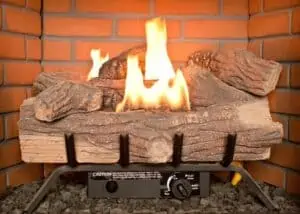How to Start a Fire in a Fireplace?
To start a fire in your fireplace, you’ll need tinder, logs, and a fireplace with a grate. Start by placing a few pieces of wood, including branches and twigs, onto the grate. Then, place your shaggiest, skinniest log gently on top of the mound. Be careful not to crush the entire flaming structure.
(Looking for Phoenix gas fireplace repair? Contact us today!)

Starting a fire in a fireplace
There are several ways to start a fire in a fireplace. The traditional log cabin method involves placing two pieces of wood that are perpendicular to the back of the firebox. One of these logs should touch the back of the fireplace while the other should be near the back of the fireplace. Then, place kindling on top of the larger logs. After you have added the kindling, light a match or lighter. This will start the fire and create a draft.
Before lighting the fire, make sure the damper in the fireplace is open. If the damper is open, you can light the kindling in the damper. You can also put some newspaper on the grate but make sure it is not too much. If you use too much paper, it may catch on fire and travel up the chimney flue. Finally, never use a butane torch to start a fire in a fireplace.
Adding logs
Adding logs to a fireplace is a basic part of building a fire. It requires a high-quality tool set, including a hooked poker and scissor tongs. It is important to add two logs at a time, allowing each to burn in the correct amount of time. Adding more than this will smother the fire or slow the burning process.
The best way to add logs is by placing them in layers, starting with two large logs placed parallel to the back of the fireplace. Leave some space between the logs to allow the flames to rise above them. You should place smaller logs on top of the logs. Once you have the first layer of logs in place, add kindling to the top.
Adding tinder
When you want to start a fire, adding tinder to your fireplace can help you get started. Tinder is the smallest and most brittle type of wood. Once it gets going, you can add fuel to it. But this method is not recommended for all situations.
Before you begin building a fire, you should gather all your supplies. You’ll also need to make sure that the damper is completely open. Next, lay out two pieces of firewood on the grate. You can add a few pieces of tinder in the middle of the wood. On top of the firewood, place several crumpled-up pieces of newspaper or rolled-up paper. Make sure to leave plenty of space between the pieces of wood and kindling to allow for air circulation.
Adding a few logs at a time
Building a fire in a fireplace can be tricky, but there are a few things you can do to keep your fire burning efficiently. First, you need to make sure that your logs are dry. If they are not, they could produce dangerous gases, making them ineffective and reducing the heat produced. Another important thing is to avoid putting too many logs in a fire. This can suffocate the fire. You also need to leave plenty of room between logs, and if there isn’t, you could create an airtight seal, which could lead to a fire outbreak.
Next, you need to gather the supplies you need. Make sure to open the damper before starting to build the fire. Next, place a few large logs in the fire pit, and then add a row of smaller logs. Then, add a layer of kindling on top. Make sure you leave enough room between the logs and the grate so that the air can circulate.
Adding a few hardwood logs
Adding a few hardwood logs to your fireplace can help keep the flames burning for a long time. Compared to softwoods, hardwood logs burn cleaner and produce less smoke. Ideally, hardwood logs should be placed about an inch from the fire. This will allow cool air to circulate through the logs, fanning the fire. For a fresh smell, add cinnamon sticks or orange peels. The orange peels’ oils will add a citrus scent to the fire. In addition, rosemary will give a woodsy pine aroma to your fire.
Before putting the wood on the fire, make sure the logs are dry. The wood should be firm and strong, and the logs should be positioned closely together for good air circulation. Once the logs have started to blaze, you can add new logs. Don’t forget to poke them as well to keep the air flowing.

